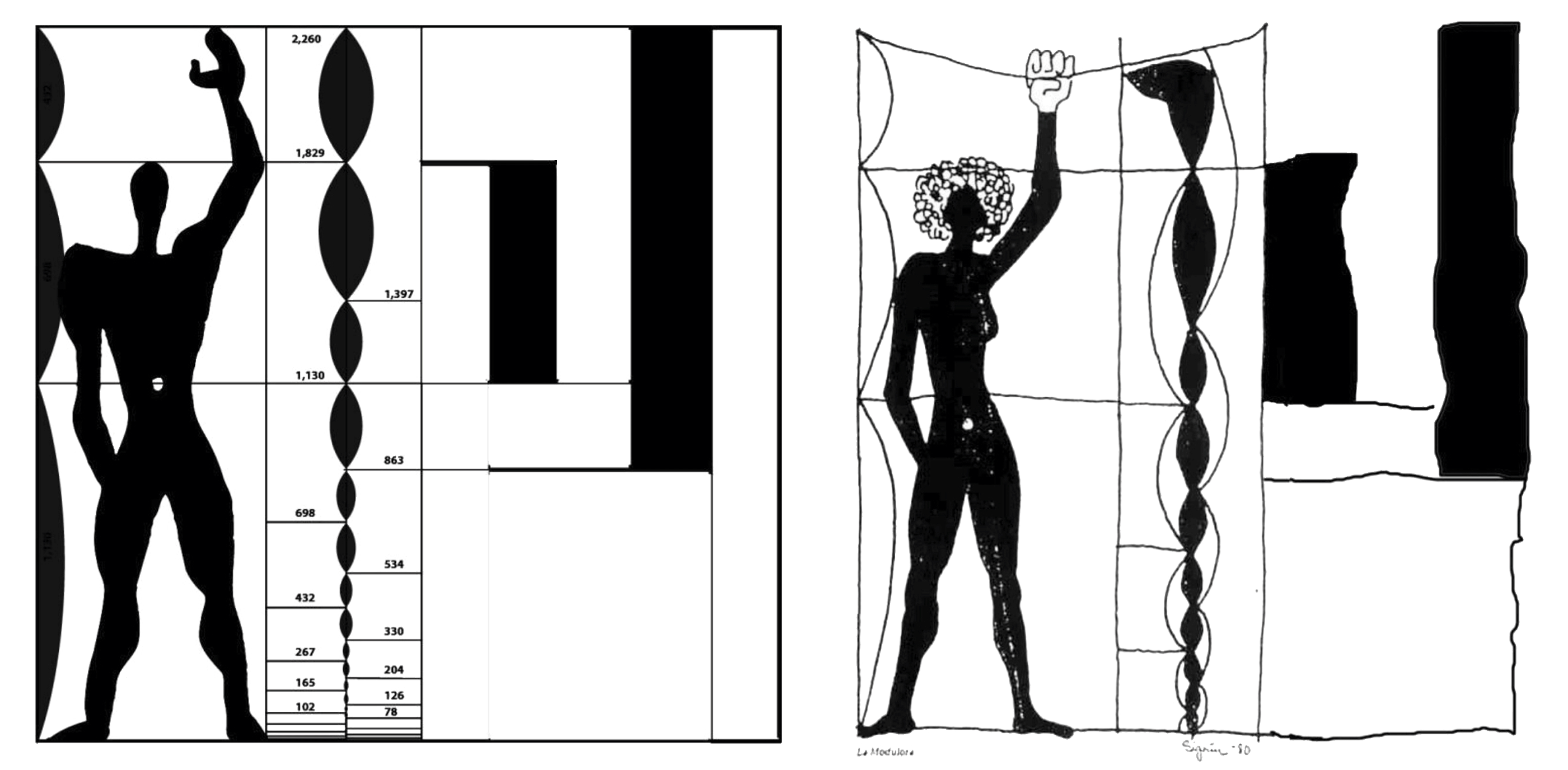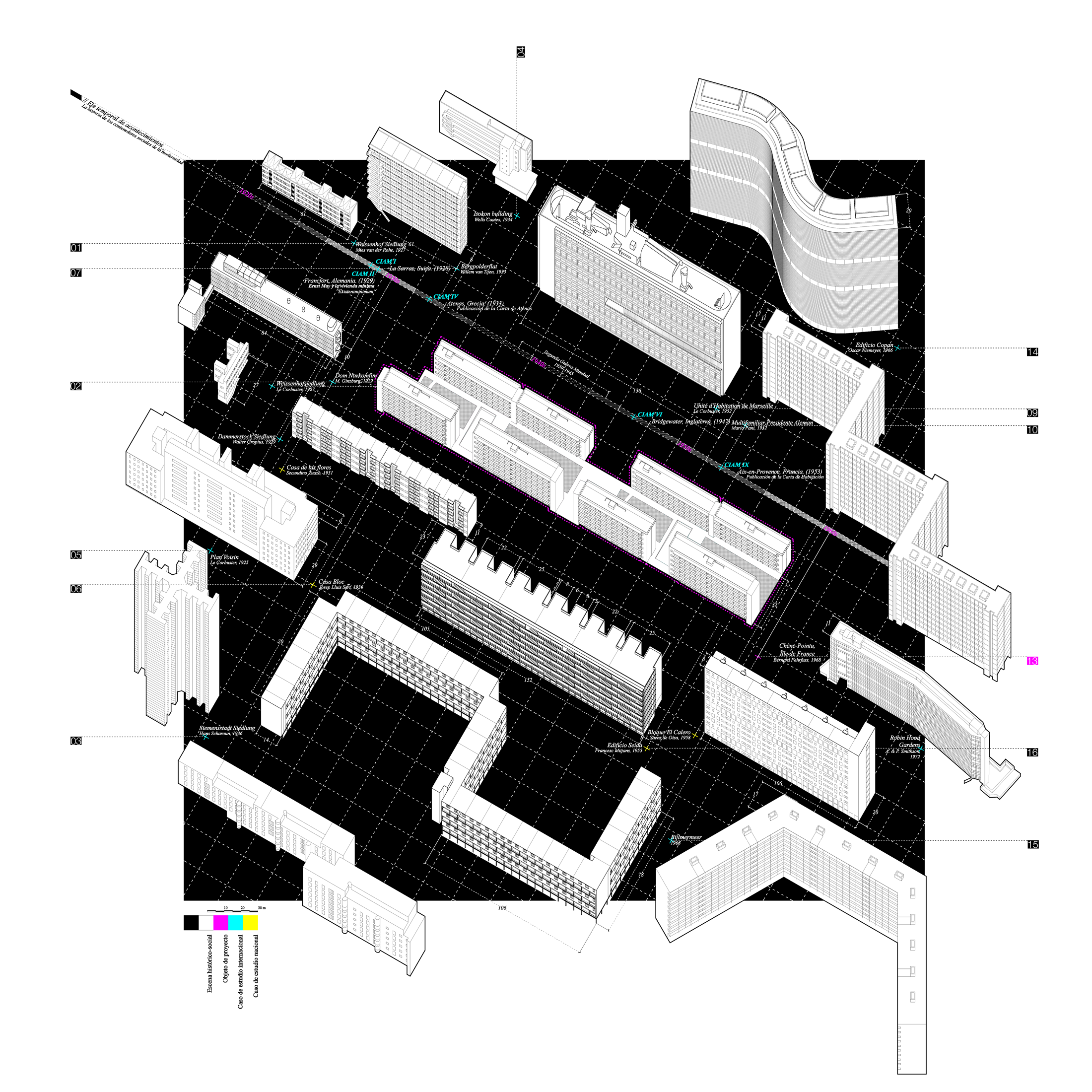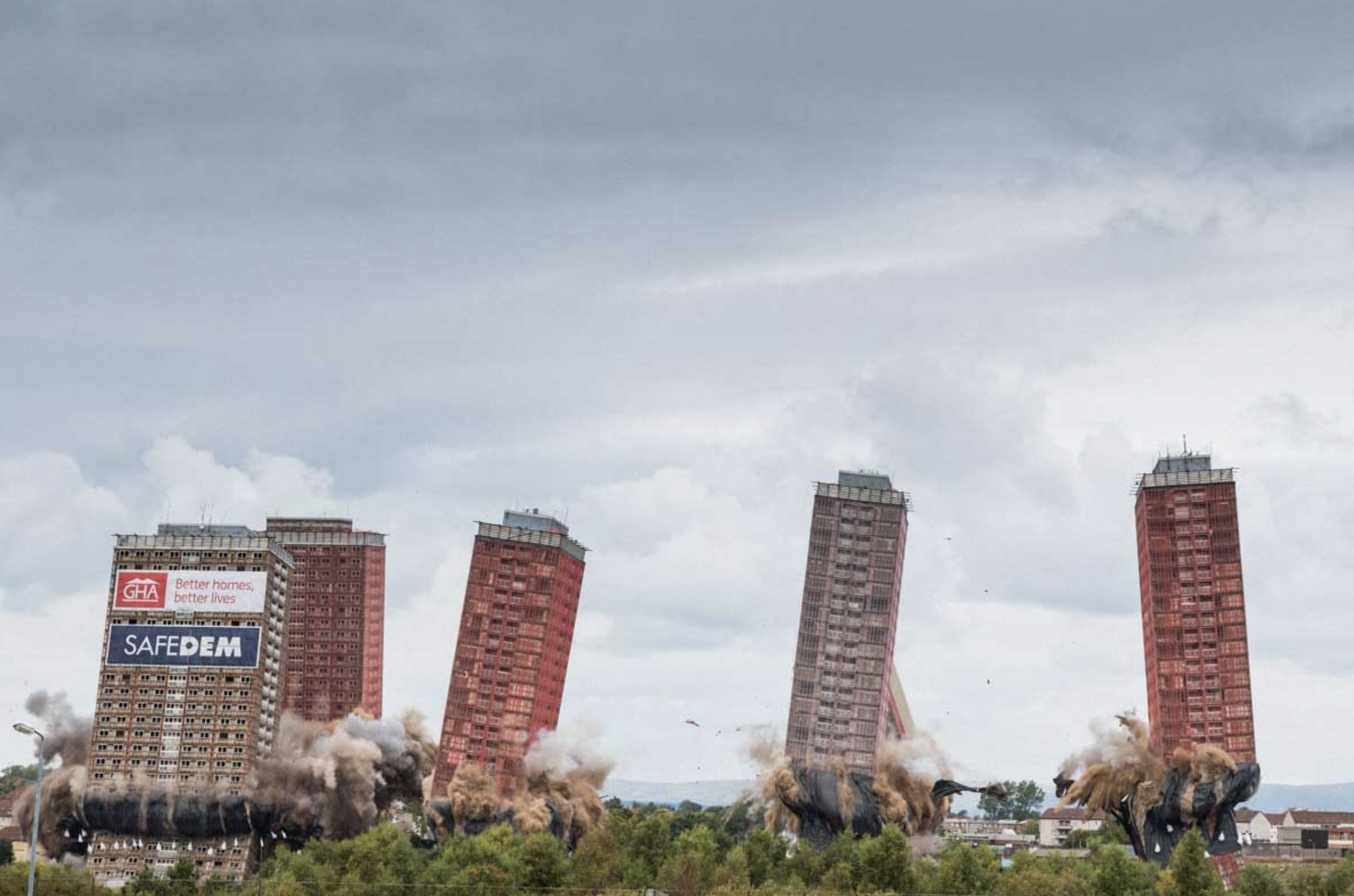
Research project by -Arquitectura Subalterna-
Team: Víctor Cano Ciborro + José Javier Cullen + José de Andrés + Ana Sabugo
Awarded by FUTURE ARCHITECTURE. Publication at PlataformaArquitectura.com www
Presented at Matchmaking Conference 2017(Future Architecture events) Ljubljana, Slovenia www
Published at ARCHIFUTURES vol.4: Thresholds
Today, fully immersed as we are in the post-truth era, reality seems to be verified through data and surveys that seek to monitor our decisions and postpone the social and spatial conflict caused by late capitalism. Appealing to notions such as affection, feeling, eroticism or identity has become necessarily rare to allow for contemporary spatial dynamics. However, these emotional rather than rational dimensions are visualised with great intensity in the periphery of cities, particularly where modernist paradigms take the form of great blocks built in avenues far removed from the human scale.
![]()
The children and grandchildren for whom these architectures were conceived now occupy the spaces, but not in the way their parents or grandparents were told; in the catechism of the Athens Charter or Modulor’s dogmatism. Rather, it is from a point of “profanation”, or, in the words of the Italian philosopher Giorgio Agamben, “restoring the space to the free use of men”.
These contemporary inhabitants, presented as “Modulor’s Bastard Children” – a complex and fascinating cosmos of subaltern groups (immigrants, homosexuals, refugees or women) who refuse to be accomplices to an environment constructed from imposition, regulation, and dogma – rebel against a deeply ideological space designed for the honourable behaviour of a white super-man, 1.83 metres tall with an athletic figure: Le Corbusier’s Modulor.
![]() Photo by Chris Leslie. Dissapearing Glasgow. End of the Red Road. Red Road Flats demolition.
Photo by Chris Leslie. Dissapearing Glasgow. End of the Red Road. Red Road Flats demolition.
In this context, inhabiting the modern periphery becomes a powerful act of resistance, where feelings, aesthetics, and identities seek to reaffirm and strengthen forgotten bonds in modern constructions. The periphery is now a confrontation between the emotional dimension of the space where the body fights to be recognised, and the rational one where, in the words of Lefebvre, the self-destruction of desire reigns supreme.
![]()
![]()
This project aims to visualise through accurate cartographic narratives the problematic, imaginary and aesthetics of inhabitants locked in a model of city and architecture that collides head on with their daily experiences and needs. It necessitates a spatial approach that goes beyond assessing the beauty or ugliness of the architectural object to focus on the relationships between bodies and space.
This is in keeping with Rem Koolhaas’ approach towards architecture as being “no longer a matter of building or conditioning a square, but of narrating stories” 1 . These stories, which for Modulor’s bastard children are daily actions of the periphery, remain hidden because architecture does not completely accept them as possible or appropriate due to their subversive and mundane connotations. *
1 GIELEN, Pascal. Rem Koolhaas and Pascal Gielen discuss Constant Nieuwenhuys. In New Babylon. Pineda, M.[edit.]. 2015. p. 252.
*Excerpt from ‘Modulor’s Bastard Children’ published at Archifutures vol 4: Thresolds
MODULOR´S BASTARD CHILDREN STORIES
(more info: www.arquitecturasubalterna.com)
CARTOGRAPHYING THE CONFLICT
One of the MODULOR´S BASTARD CHILDREN stories is the understanding of the contemporary urbanism from conflict.
Urbanism is no longer in the suburbia’s cities as the beautiful or ugly composition of buildings. Urbanism in suburbia is the endless movements, actions, events, relations and frictions between the bodies and its spatial built context. So, riots must be understood as one of the most relevant practices to understand how is the real space of the city.
In this example we can see how is depicted an uninspiring modernist district beyond the rectangular shape of the building and the accurate grid of parking lots, to represent a riot as representative ways of urbanism.
![]()
![]()
Team: Víctor Cano Ciborro + José Javier Cullen + José de Andrés + Ana Sabugo
Awarded by FUTURE ARCHITECTURE. Publication at PlataformaArquitectura.com www
Presented at Matchmaking Conference 2017(Future Architecture events) Ljubljana, Slovenia www
Published at ARCHIFUTURES vol.4: Thresholds
Today, fully immersed as we are in the post-truth era, reality seems to be verified through data and surveys that seek to monitor our decisions and postpone the social and spatial conflict caused by late capitalism. Appealing to notions such as affection, feeling, eroticism or identity has become necessarily rare to allow for contemporary spatial dynamics. However, these emotional rather than rational dimensions are visualised with great intensity in the periphery of cities, particularly where modernist paradigms take the form of great blocks built in avenues far removed from the human scale.

The children and grandchildren for whom these architectures were conceived now occupy the spaces, but not in the way their parents or grandparents were told; in the catechism of the Athens Charter or Modulor’s dogmatism. Rather, it is from a point of “profanation”, or, in the words of the Italian philosopher Giorgio Agamben, “restoring the space to the free use of men”.
These contemporary inhabitants, presented as “Modulor’s Bastard Children” – a complex and fascinating cosmos of subaltern groups (immigrants, homosexuals, refugees or women) who refuse to be accomplices to an environment constructed from imposition, regulation, and dogma – rebel against a deeply ideological space designed for the honourable behaviour of a white super-man, 1.83 metres tall with an athletic figure: Le Corbusier’s Modulor.
 Photo by Chris Leslie. Dissapearing Glasgow. End of the Red Road. Red Road Flats demolition.
Photo by Chris Leslie. Dissapearing Glasgow. End of the Red Road. Red Road Flats demolition. In this context, inhabiting the modern periphery becomes a powerful act of resistance, where feelings, aesthetics, and identities seek to reaffirm and strengthen forgotten bonds in modern constructions. The periphery is now a confrontation between the emotional dimension of the space where the body fights to be recognised, and the rational one where, in the words of Lefebvre, the self-destruction of desire reigns supreme.


This project aims to visualise through accurate cartographic narratives the problematic, imaginary and aesthetics of inhabitants locked in a model of city and architecture that collides head on with their daily experiences and needs. It necessitates a spatial approach that goes beyond assessing the beauty or ugliness of the architectural object to focus on the relationships between bodies and space.
This is in keeping with Rem Koolhaas’ approach towards architecture as being “no longer a matter of building or conditioning a square, but of narrating stories” 1 . These stories, which for Modulor’s bastard children are daily actions of the periphery, remain hidden because architecture does not completely accept them as possible or appropriate due to their subversive and mundane connotations. *
1 GIELEN, Pascal. Rem Koolhaas and Pascal Gielen discuss Constant Nieuwenhuys. In New Babylon. Pineda, M.[edit.]. 2015. p. 252.
*Excerpt from ‘Modulor’s Bastard Children’ published at Archifutures vol 4: Thresolds
MODULOR´S BASTARD CHILDREN STORIES
(more info: www.arquitecturasubalterna.com)
CARTOGRAPHYING THE CONFLICT
One of the MODULOR´S BASTARD CHILDREN stories is the understanding of the contemporary urbanism from conflict.
Urbanism is no longer in the suburbia’s cities as the beautiful or ugly composition of buildings. Urbanism in suburbia is the endless movements, actions, events, relations and frictions between the bodies and its spatial built context. So, riots must be understood as one of the most relevant practices to understand how is the real space of the city.
In this example we can see how is depicted an uninspiring modernist district beyond the rectangular shape of the building and the accurate grid of parking lots, to represent a riot as representative ways of urbanism.


© Riot cartography by Arquitectura Subalterna

Photo by ARCHIFUTURES. Modulor’s Bastard Children article by ARQUITECTURA SUBALTERNA. Archifutures vol.4: Thresholds
AWARDED BY FUTURE ARCHITECTURE PLATFORM
Selected participants for Future Architecture 2017 at the official website
The members of Future Architecture and Future Architecture selected creatives of 2016 selected 24 ideas from the 337 received at this year's Call. The authors will be invited to the Matchmaking Conference, where they will present their ideas on Future Architecture and get the chance to become a part of Future Architecture programme of events.
![]()
![]()
AWARDED BY FUTURE ARCHITECTURE PLATFORM
Selected participants for Future Architecture 2017 at the official website
The members of Future Architecture and Future Architecture selected creatives of 2016 selected 24 ideas from the 337 received at this year's Call. The authors will be invited to the Matchmaking Conference, where they will present their ideas on Future Architecture and get the chance to become a part of Future Architecture programme of events.
Future Architecture is the first pan-European platform of architecture museums, festivals and producers, bringing ideas on the future of cities and architecture closer to the wider public.
The members are museums, festivals, publishers and architectural producers that play a role in the field of architecture in their local environment, serve as one of the main sources of architecture-related information, and have the skills to create outstanding, and widely-attended events.
Coordinating entity: Museum of Architecture and Design, Ljubljana (SI); members: Oris House of Architecture, Zagreb(HR), Museum of Architecture in Wrocław (PL), Belgrade International Architecture Week (SR), National Museum ofXXI Century Arts, Rome (IT), House of Architecture, Graz (AT), Copenhagen Architecture Festival (DK), TiranaArchitecture Week (AL), One Architecture Week (BG), Design Biotop, Ljubljana (SI), Lisbon Architecture Triennale (PT), dpr-barcelona (ES), CANactions, Kiev(UA), Bureau N, (DE); associate members: Swiss Architecture Museum, Basel (CH), Prishtina Architecture Week (RKS), Forecast, Berlin (DE), Calouste Gulbenkian Foundation (PT)


